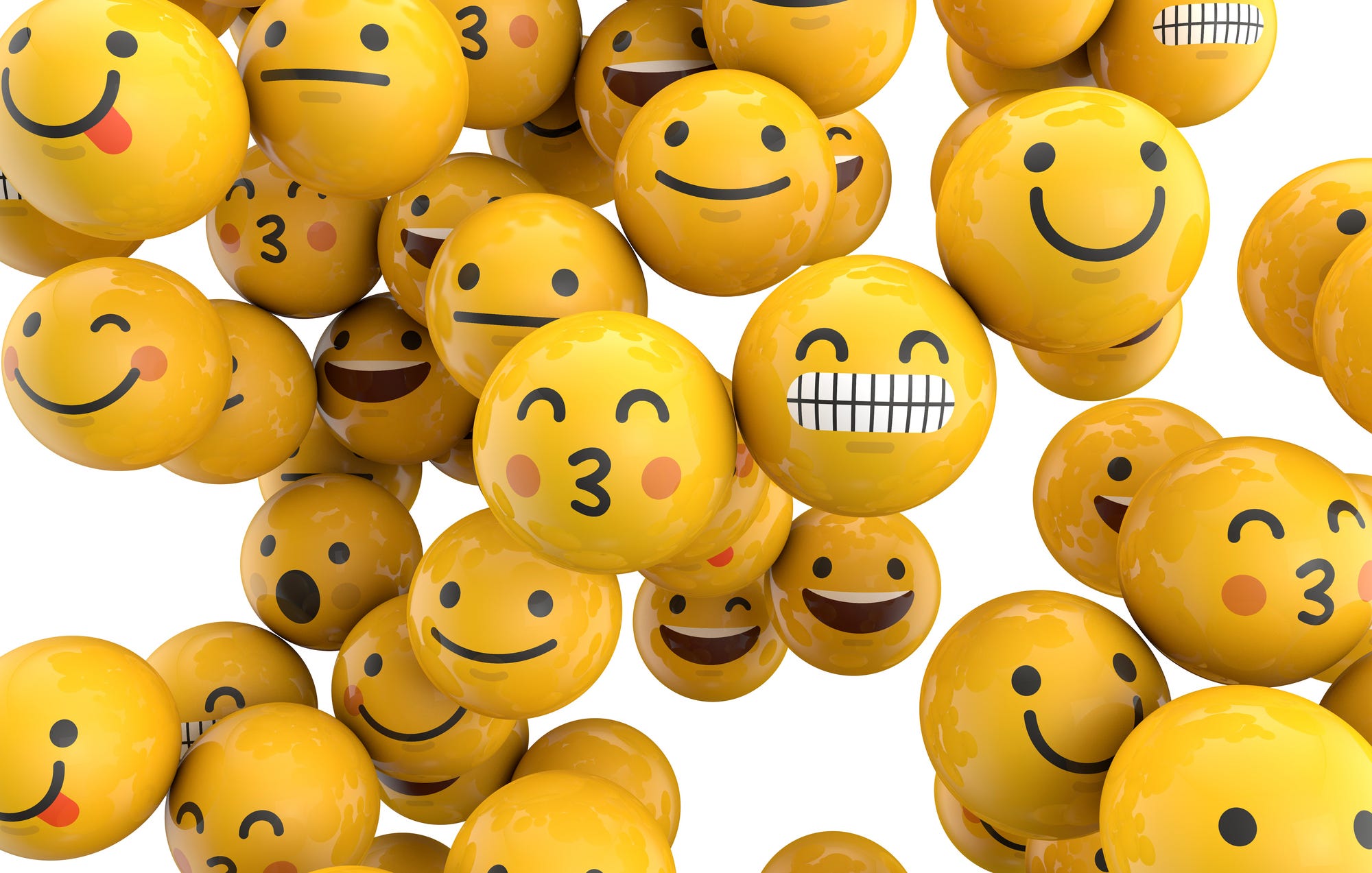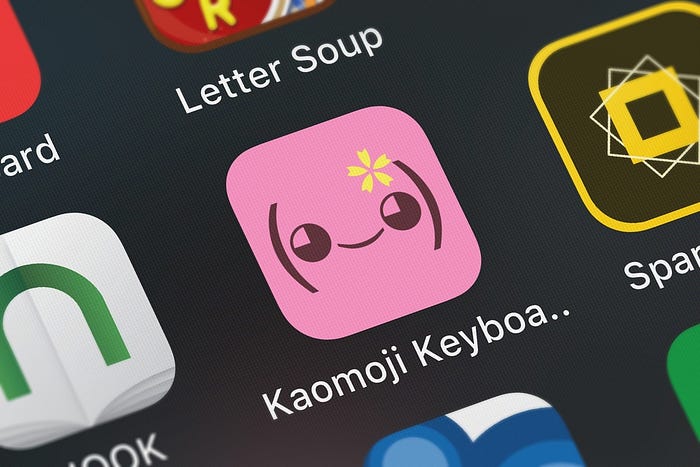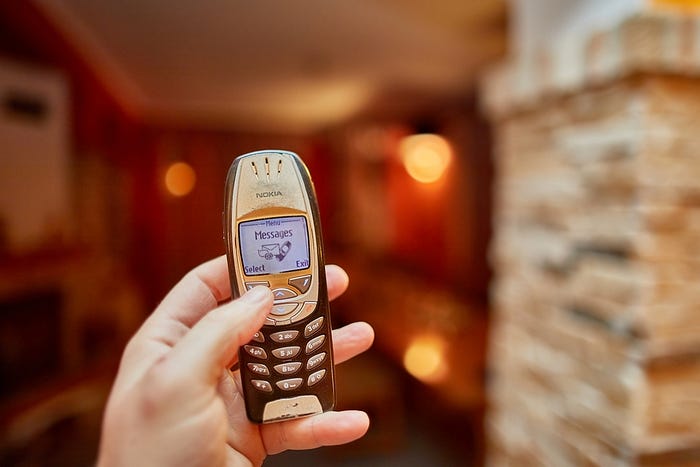
📅❤️ Happy World Emoji Day! Amazing facts about a new universal language
Can you stop using emojis when you text? The Depositphotos team can’t, and we’re sure you’d have trouble avoiding them as well. It’s time to take apart why that is.
Today, emojis are officially equated with digitally printed characters and presented in the Unicode standard. This sign system (or rather the language) is the fastest growing and spreading one in the history of mankind. The first emojis, as we know them, appeared in 1997 in Japan. At that time, these thumbnails were created in order to save space on the screen, time spent on creating messages, as well as traffic. And in 2020, there will be no operating system that does not support emojis.
July 17th is World Emoji Day, which was established by emojis fans after Apple released its version of the calendar emoji, which marks July 17 if you scroll to find it. On this symbolic date, we want to tell you how emoji has changed our communication culture.
Hunting for the Original Emoji in Japan
5 years ago, the face with tears of joy emoji was named The Word of the Year, and the emoji alphabet script was recognized as a factor that significantly influenced mass culture in the 21st century. How did it all start? To answer this question, let’s go back to Japan in the early 2000s.
Have you noticed that in the standard set of emojis there are many mysterious and non-European symbols? For example, a bowing businessman, a contoured white flower, Dango, or onigiri. All these symbols are a tribute to the Japanese for their contribution to the development of emojis.

Contrary to the popular belief, the word “emoji” has nothing in common with the English word “emotion”. It comes from Japanese words, which in English mean “picture” and “character”.
The authorship of the first emoji is almost impossible to define. The most popular version is related to a Japanese interface designer Shigetaka Kurita. In 1998, he created a pack of emojis for i-mode, the Japanese mobile web platform. Kurita took pictograms from weather forecasts, Chinese characters, and road signs as inspiration. The work of this UI designer is now part of the permanent collection of MoMA (New York).
To create a set of almost 200 emoji, Shigetaka Kurita took hour-long walks around the city and watched the daily activities of people around. This is how user research looked at the dawn of the development of high-speed mobile Internet.

According to another version followed by Emojipedia, a set of 90 emojis for the J-Phone (Japanese mobile phone) was released in 1997 as its typeface. Unfortunately, J-Phones were discontinued. However, some of the emoji that they contained are called classics of the modern emoji language.
But whoever was the author of the first emoji, by 2000, all mobile phones that were produced in Japan had emojis in their interfaces. This allowed their users to exchange 12×12 pixel pictures instead of words.
Why did it all start in Japan? The fact is that Japan has a rich national tradition of using images within the text. The first form of graphic expression in digital messages was kaomoji, images made up of printed characters like dots, dashes, and commas. In turn, the prototypes of such impromptu paintings were facial expressions of some heroes from Japanese manga.

Emoji Dominating Mobile Internet in the 2010s
In the 2000s, when emojis were already used in Japan, companies in Europe and the USA simultaneously attempted to mix images with text and offer their users alternative self-expression methods.
The strongest trend of those times is associated with vertical emoticons, that is, combinations of characters that would resemble a smile or other facial expressions. The most popular smiley is :-). These emoticons could turn into digital smileys on some models of mobile devices (Alcatel BC600 or most Nokia devices).

Fun fact: in 1997, in Europe and more than 100 other countries, symbols in the form of smiley were already patented by Nicolas Loufrani, who owned the Smiley company. In the 2000s, he released his catalog of graphic emotions and called it Smiley Dictionary. The key idea of this catalog is to show people how to code smileys using basic printed characters. Owners of old mobile devices saw the basic version of smileys, and those whose phones supported new technologies saw color pictures.
In 2005, based on the Smiley Dictionary, modern categories of emoji arose and became a part of international mobile standards in Europe. They included Emotions, Weather, Nature, Food, and more. The first emoji were pictures inserted into the text, however, modern emojis are an integral part of the keyboard (the ISO 15924 script code for emoji). And that’s the key difference.

By 2010, mobile Internet speed increased significantly, and people began to communicate not via SMS, but via messages in instant messaging apps like WhatsApp, Messenger, WeChat, and many others. And in 2009, emojis finally appeared in Unicode which is the global standard for the consistent encoding of text expressed in most of the world’s writing systems.
That’s how the calendar emoji appeared, which on Apple devices (as well as in iOS applications) looked like a calendar with July 17 marked on it.
How to Сommunicate in the Era of Emojis: Visual Culture Transformations
Emoji is a brilliant way to communicate with an extra layer of meaning. These images make your text easier to read and understand, and also save time for your followers, as most of them are visual learners. Emojis are so expressive and relatable, that it’s hard to get by without them today.
At Depositphotos, we’ve been working with visuals for 11 years. All these years we have been observing the evolution of visual communications, and now we want to narrow in on which aspects of the visual culture have changed because of emojis.
#1 Intersection of cultures
Tips for marketers: study your target audience and check out what symbols could be used across your communication
In 2020, culture became more global than ever. The reason is not only the spread of the global Internet but also emojis. At the same time, some emojis often become a point for cultural misunderstandings.
Do you speak emoji? The problem with the emoji “alphabet” is that people from different cultures interpret the same characters in different ways. The most common examples are a smiling face, which in China is a negative symbol, an angel, which in some European countries means death, or the applause emoji which symbolizes sex in China.
We can conclude that emojis are not truly a global language and we should use emoji in communication with other nationalities carefully. Emojis can also become a cultural bridge and an occasion to learn more about other nationalities and religions. Modern linguists also talk about the formation of the so-called national emoji dialects.

#2 Visually-Driven World
Tips for marketers: use emojis as much as possible
Stock images help companies save on the production of advertising campaigns. Stock vectors make commercial sites comprehensive and user-friendly. In turn, emojis make your information decoding speed higher at the micro text level (the level of direct messages or single posts). A photograph can tell a story and replace a page of text. Modern emojis replace words, concepts, and individual statements.
Examples: emoji-based descriptions of famous movies by Entertainment Weekly and an article on contemporary art designed by Google Arts&Culture using emojis.
Emojis boost engagement greatly, set up the mood and vibes, and can convey complicated meanings. Recent research has shown that over 57% of Facebook posts with emojis get more likes and 33% of them get shares and comments. You can also use emojis in letters and conversational marketing, where saving user time is very important. Use Emojisaurus to convert your idea into emojis.

#3 Emoji-Based Popular Culture
Tips for marketers: integrate emojis at other levels of your content strategy besides brand messages on social media
The ratio of traffic consumed by mobile and desktop devices is constantly shifting in favor of the first category. It means that most of the content that we will see on the Internet in the near future will be designed for smartphone users. We will see emojis in articles, on web sites, and videos even through our non-mobile screens.
Emojis, as part of the mobile world, are also gradually penetrating our offline lives. In 2016, a musical about emojis was played in one of the Los Angeles theaters. A year after, the computer-animated film The Emoji Movie was released. In addition, one of the most influential contemporary art museums in the world, MoMA, dedicated the exhibition to the development of emoji culture. Its curators called the first set of emoji a piece of art.
Emojis are also popular as a means of expression in street art and more. Check out works by Kyle M. F. Williams, Ron English, Caiozzama, Yung Jake, and other urban artists for inspiration.
#4 Inclusion Marker
Tips for marketers: monitor new emojis and use diverse images to express your ideas
The emoji collection is updated almost every month. Studying these updates can help us find out what trends are dominating and how our society is changing. Examples: the green salad emoji (which first included an egg, and then became vegetarian) or the hamburger emoji and the sandwich emoji (their ingredients mix, appear, and disappear).

But it is also interesting to observe emojis carrying the ideas of equality, tolerance, and inclusion. In 2018, the standard emoji set was replenished with female versions of all emoji related to professions, and all the “human” emojis received skin color variations.
Later, some emojis were also added to the collection. Today, emojis depict different forms of the family (from a traditional family of a man, a woman, and two children of different sexes to a family of two men and two daughters, a single father and two sons, and many others). Modern kissing emojis also portray various LGBTQ people. Another marker of inclusion is the appearance of people with disabilities in the emojis collection.
Emoji not only appear but also disappear. For example, the emoji with a revolver was replaced with the water gun (pistol) emoji to prevent using it for Internet threats.
A similar fate could befall the eggplant emoji, which became the Most Notable Emoji of 2015 in the Word of the Year vote conducted by the American Dialect Society. The eggplant emoji is often associated with the male genital organ, and, as revealed due to the open-source analysis, only three out of ten people used this emoji in the context of cooking. Fortunately, harmless eggplant is still with us!

#5 Emoji-Based Studies
Tips for marketers: learn more about users through emojis they often use
Emojis give users the ability to exchange messages faster and to better understand each other. They quickly convey the mood of the overall message, without the person even having to read the text. For similar reasons, emojis turned into extra material for research on the target audience for most marketers.
One of the South Park episodes was devoted to digital “handwriting” identification. There, emoji analysis became the way to resolve the issue. And why not? In 2020, 117 images are included in the standard emoji set, and it is unlikely that you are using the entire set.
Not every marketer has access to the private correspondence of clients, but all of them have access to their public texts such as publications on Instagram, Facebook, Twitter, and other platforms. Analysis of emojis, which are most often used by users, will help marketers to collect information about their psychotype, interests, and views.

In addition, analyzing the emojis that people use while referring to your brand will help you measure their satisfaction with products or services.
Final Thoughts
Emojis made our online communication convenient and fun. Emojis help us understand each other better, even if we speak different languages. We can also use emojis when we do not have time to write a text or when we express with their help things that would otherwise take much more with plain words.
Emojis fit perfectly into our visually-driven world, and that’s why the emoji alphabet, invented in Japan and imbued with its graphic traditions, spread around the world so quickly.
For the 20 years that emojis have been used, they managed to change the culture of our communication and the way marketers work with their audience. Just as stock photography has become more authentic, inclusive, and multi-layered over the past decade, emojis have transformed from generalized icons to international symbols glorifying diversity and inclusiveness.
At Depositphotos, we welcome these changes and hope that with each July 17th, you’ll have one more reason to reflect on the nature of this language and new breakthroughs in visual communication.
